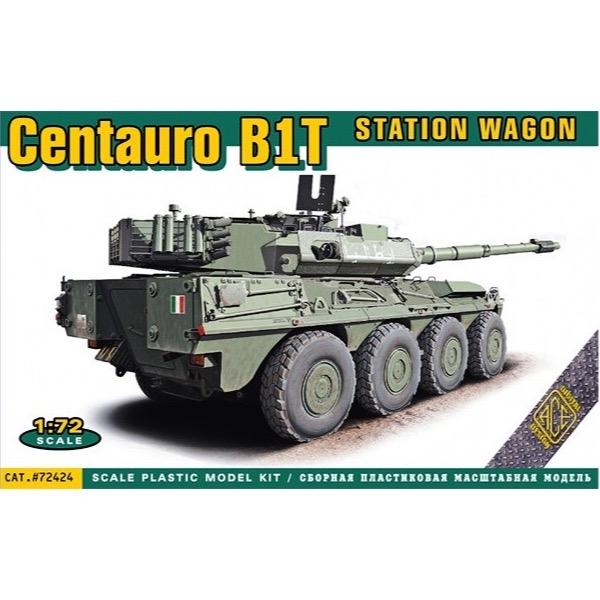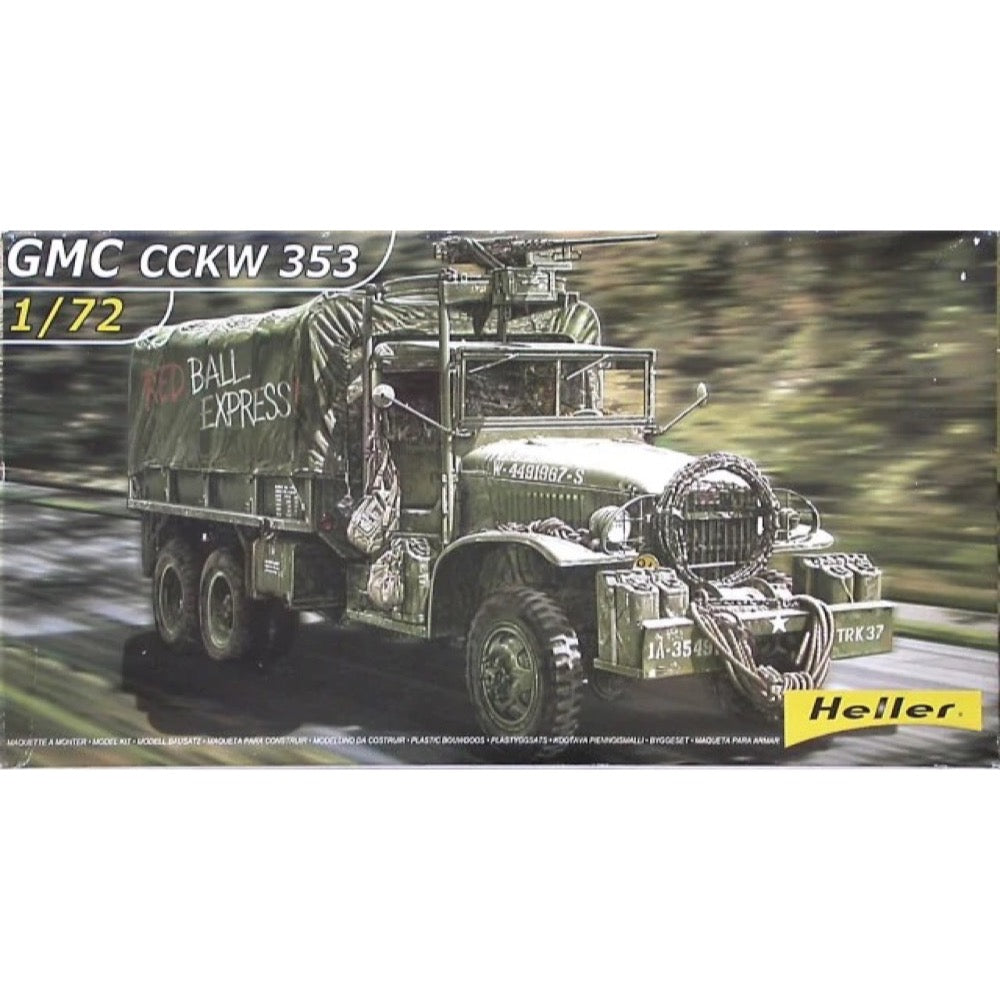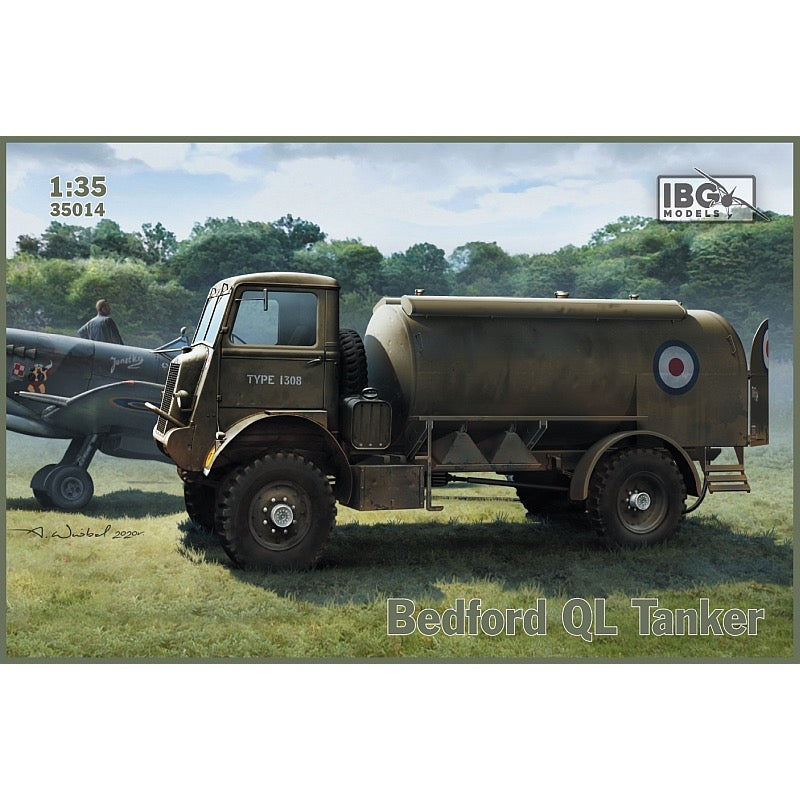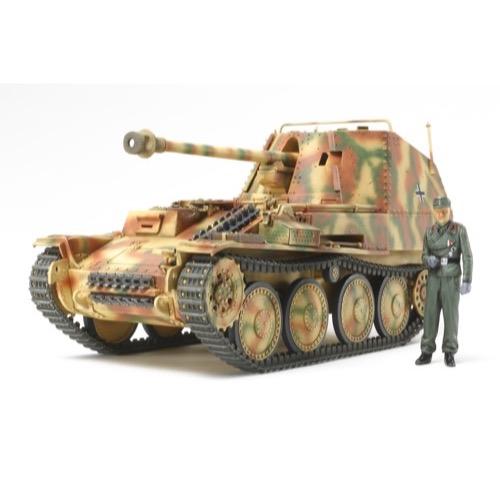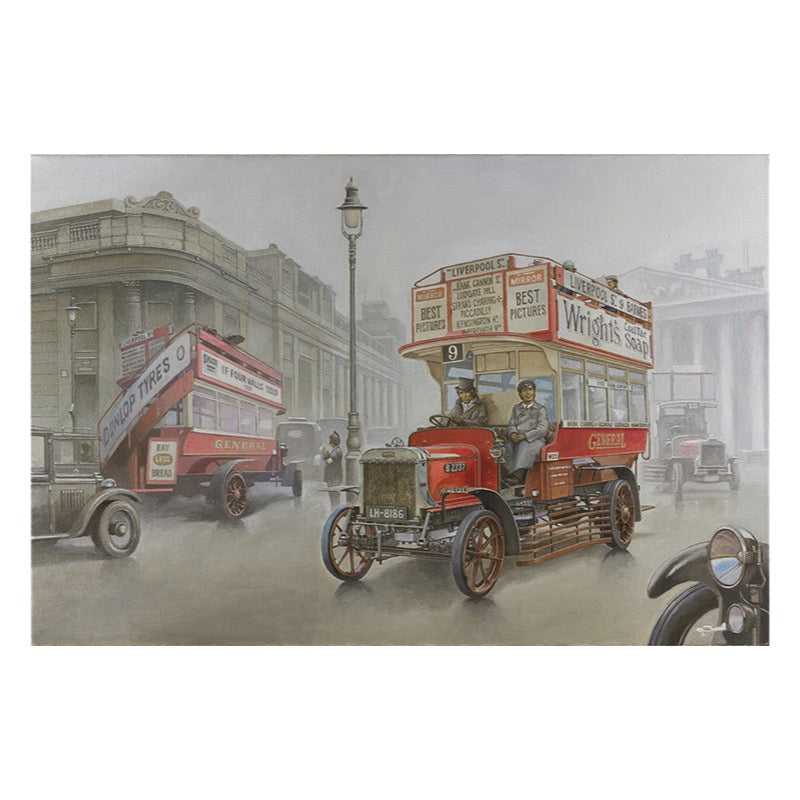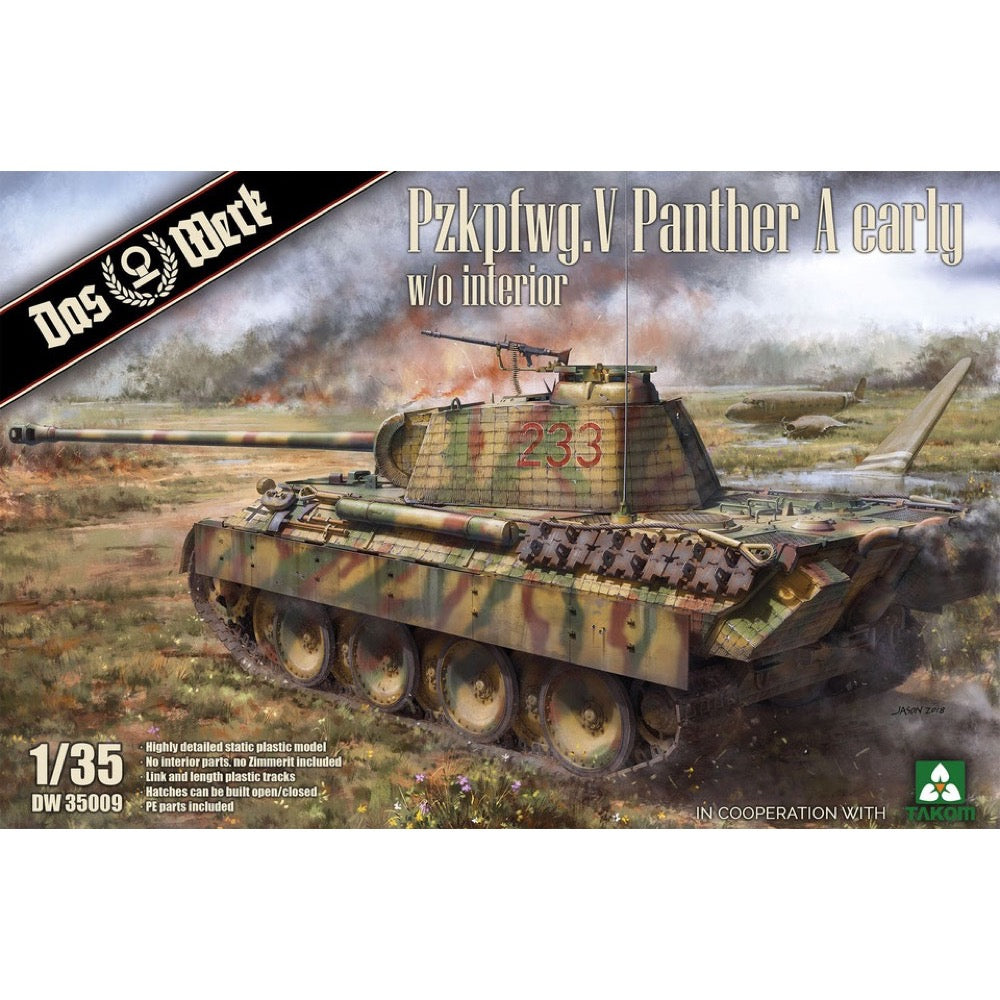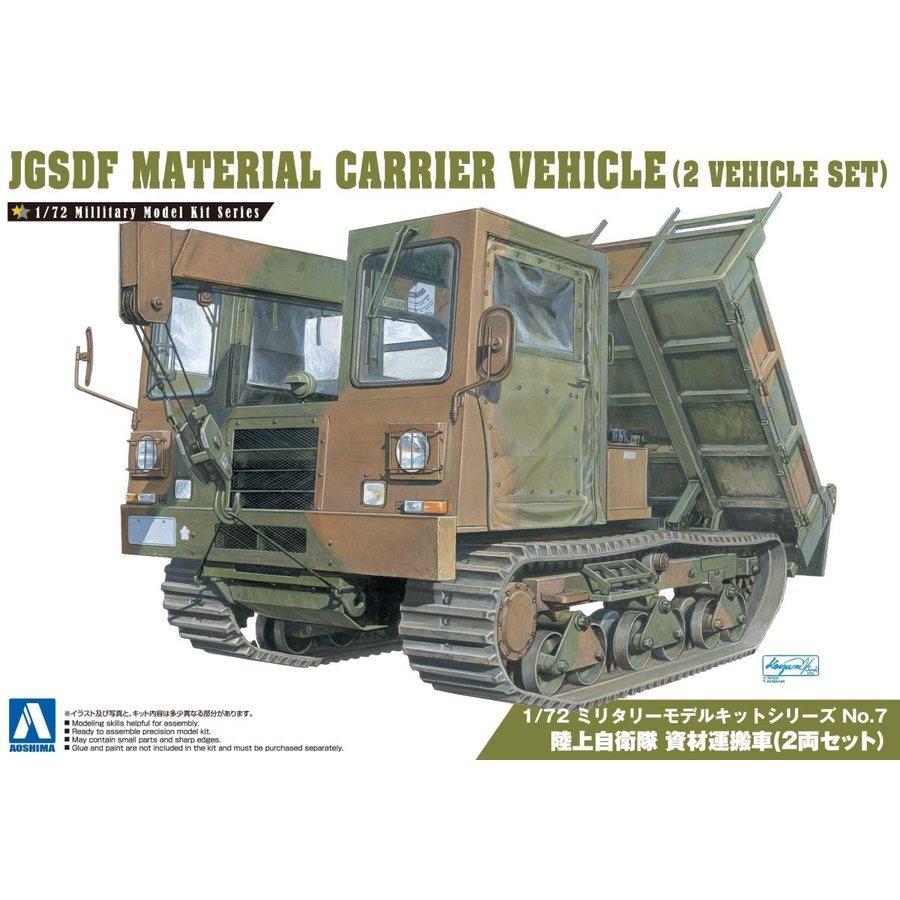
Aoshima A000797 1/72 JGSDF Material Carrier Two Vehicle Set
15.00
$
<p>This is a plastic model kit, which comes unassembled and unpainted. Rare collectable items to build or collect. Superb detail & quality enthusiast modelling kit. Includes decals and assembly instructions. So glue, model paints and other basic modelling tools are additionally required for assembly.</p>
<h3>Features</h3>
<ul>
<li>Manufactured by: Aoshima Models</li>
<li>Series: 1/72 Military Model</li>
<li>Package Weight: 299g</li>
<li>Type: Full kit</li>
<li>Scale: 1:72</li>
</ul>
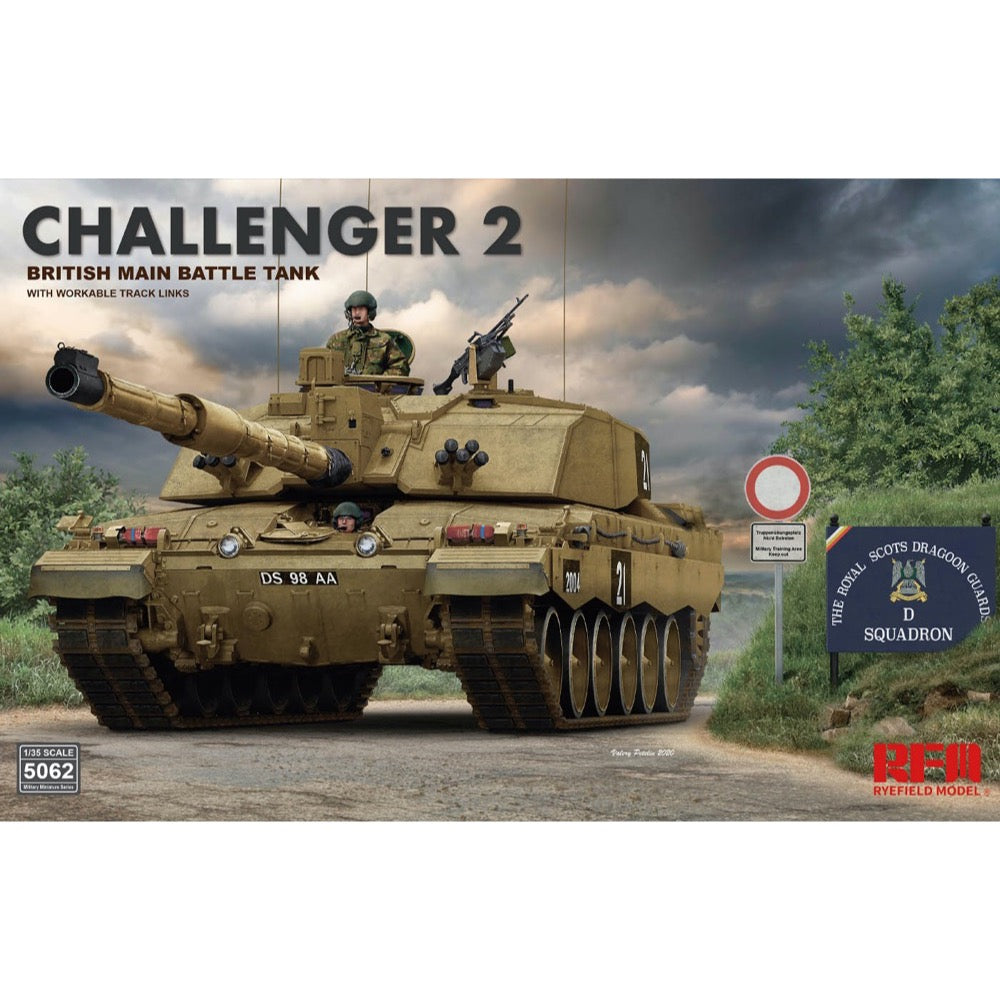
Rye Field Model 5062 1/35 Challenger 2 British Main Battle Tank with Workable Track Links
37.00
$
<p>The British Challenger 2 is a third generation main battle tank in service with the armies of the United Kingdom and Oman. It was designed and built by Vickers Defence Systems as a successor to Challenger 1. It has seen combat service in the Middle East.</p>
<p>Rye Field Model's plastic kit of the Challenger 2 British main battle tank features workable track links! Photo-etched parts are also included, as are decals for four types of markings. (Figures are not included.) Assembly required. Paint and glue not included.</p>
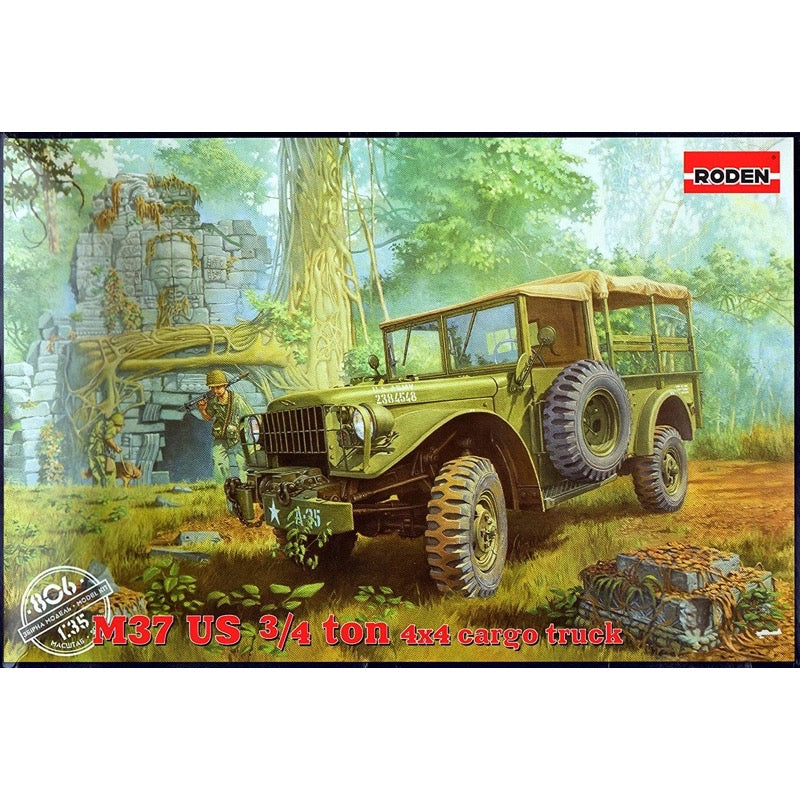
Roden 806 1/35 M37 US 3/4 ton 4x4 Cargo Truck
27.00
$
<p>Among the huge number of different trucks used by the American army throughout the modern era (since World War II), only some can rightfully be called legendary, as it is difficult to distinguish the part they played in terms of the widespread use of the vehicles in everyday military life. One such truck was the M37 developed by the Dodge company in 1950, which incorporated all the best features of its WWII predecessors.</p>
<p>The M37, along with the previous models in the WC series, had a 6-cylinder engine of 230 cubic inches (3.8 liters), and a four-speed non synchronized gearbox. However, its chassis was lengthened, and the driver's cabin was separated from the body. The truck also received a new two-speed transmission. The design was successful and in 1951 around 11,000 units of this type were built, and in the next three years more than 50,000 units.</p>
<p>The emergence of the new machine was timely – in the middle of 1950 the Korean War began, in which the U.S. was directly involved before three years were out. In actual military operating conditions, the M37 quickly found itself indispensable, and many special vehicles were developed from it (a command truck, a communications vehicle, an airfield fire engine, an ambulance, etc.), and so it became a real find for the army.</p>
<p>In 1958, in the light of further operating experience, a number of changes were made to the design of the M37, and the modified vehicle was given the M37B1 designation. It started coming off the production lines in considerable volumes – about 48,000 of the upgraded machines were constructed, and about 5,000 more under license in Canada.</p>
<p>At the beginning of the Sixties another conflict in Southeast Asia, which had already been simmering for a long period of time, flared up with new intensity with the direct participation of the two superpowers of the time, the Soviet Union and the U.S.A. The Vietnam War became a major testing ground for the M37 like most other examples of military equipment of the time. Just as with the previous conflict, the trucks were widely used in a great variety of roles, besides which many machines were modified in field conditions with additional armor, and the M37 was sometimes fitted with large caliber machine guns of various types.</p>
<p>Series production of the M37 ended in 1968. During this time more than 115,000 units rolled off all the various production lines. Besides the U.S.A. and Canada, other significant operators were Israel and Greece. Many trucks were auctioned off from military service and sold to private owners. Nowadays, many M37s can be found as museum exhibits, or as participants in shows put on by military enthusiasts.</p>
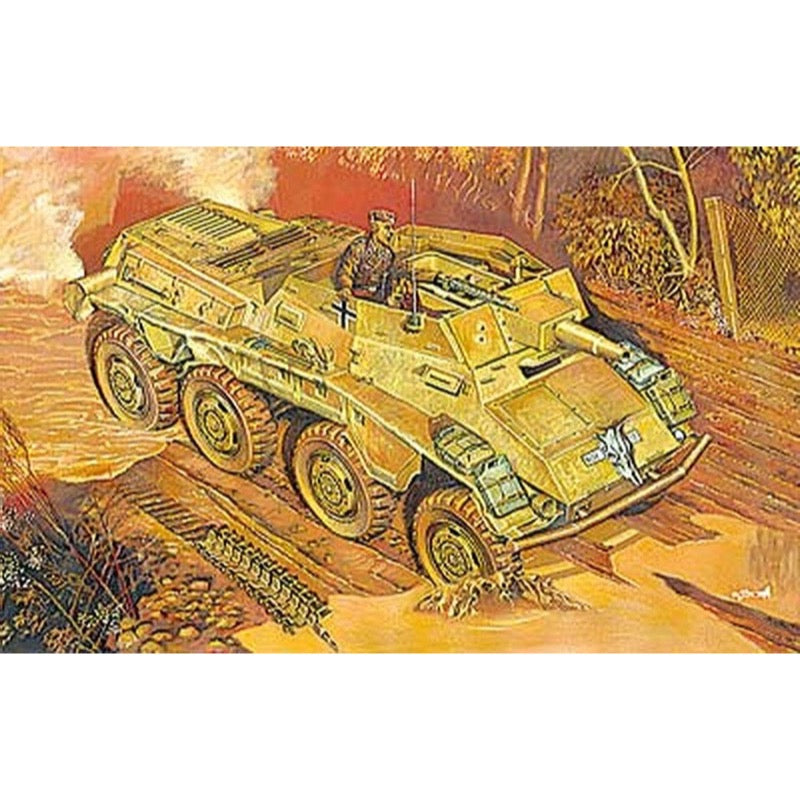
Roden 707 1/72 German Sd Kfz 234/3 Heavy Armored Car
6.00
$
<p>Immediately after the advanced new Sd.Kfz.234/2 Puma eight-wheeled armored car was accepted for service in 1943, an order was given to the Bussing NAG firm for the construction of a variant with a 75 mm caliber gun installation.</p>
<p>This machine would replace similar machines of the Sd.Kfz.233 Stummel type, which was not in series production, but adapted from GS 8-Rad machines under repair after use in combat.</p>
<p>The Sd.Kfz.233 Stummel had proved the concept of artillery support by armored cars, and consequently the work on developing the Sd.Kfz.234/3 began straight away.</p>
<p>In October the first prototype Sd.Kfz.234/3 was delivered to the range of the armored-technics concern Ariss.</p>
<p>The armored hull was not greatly altered in comparison with the Sd.KFZ.234/2 Puma. As with the Sd. Kfz. 233 Stummel, the superstructure and top armor plate were dismantled, but unlike the Stummel, the new armored car received the more modern K51 L/24 75mm caliber gun. Elevation was limited from -10° to +12°; and Sfl Zf 1b periscope sights were fitted.</p>
<p>Batch production began at the end of 1943 and continued up to the end of 1944. In total there was the opportunity to build only 88 units of the Sd.Kfz.234/3, as in 1944 the German war industry experienced widespread destruction from Allied bombing strikes, and any areas which had escaped, directed their efforts towards repairing the damage of existing armor and equipment.</p>
<p>The overwhelming majority of the 88 completed Sd.Kfz.234/3 served with the 116th Panzer Division which was at war in Normandy. Data on the operational efficiency of this type was not kept, but at least one Sd.Kfz.234/3 was captured by the British Army. This armored car was examined at one of the allied testing grounds, and then it was sent to the Tank Museum in Bovington, in Dorset in Southern England, where it is exhibited today.</p>
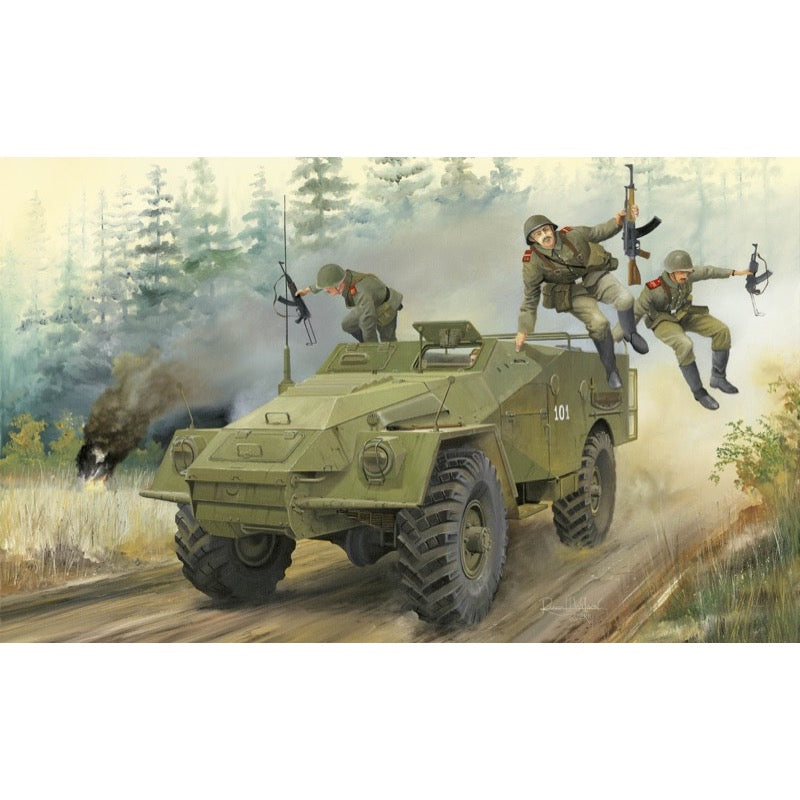
Trumpeter 05517 1/35 Russian BTR-40 APC
28.00
$
<p>The BTR-40 is a Soviet non-amphibious, 4-wheel drive armoured personnel carrier and reconnaissance vehicle. The BTR-40 built on the GAZ-63 chassis. Featuring a sloping front, flat rear, and open roof, some variants have an armored roof. It is also the first mass-produced Soviet APC. It was eventually replaced in the APC role by the BTR-152 and in the reconnaissance vehicle role by the BRDM-1.</p>
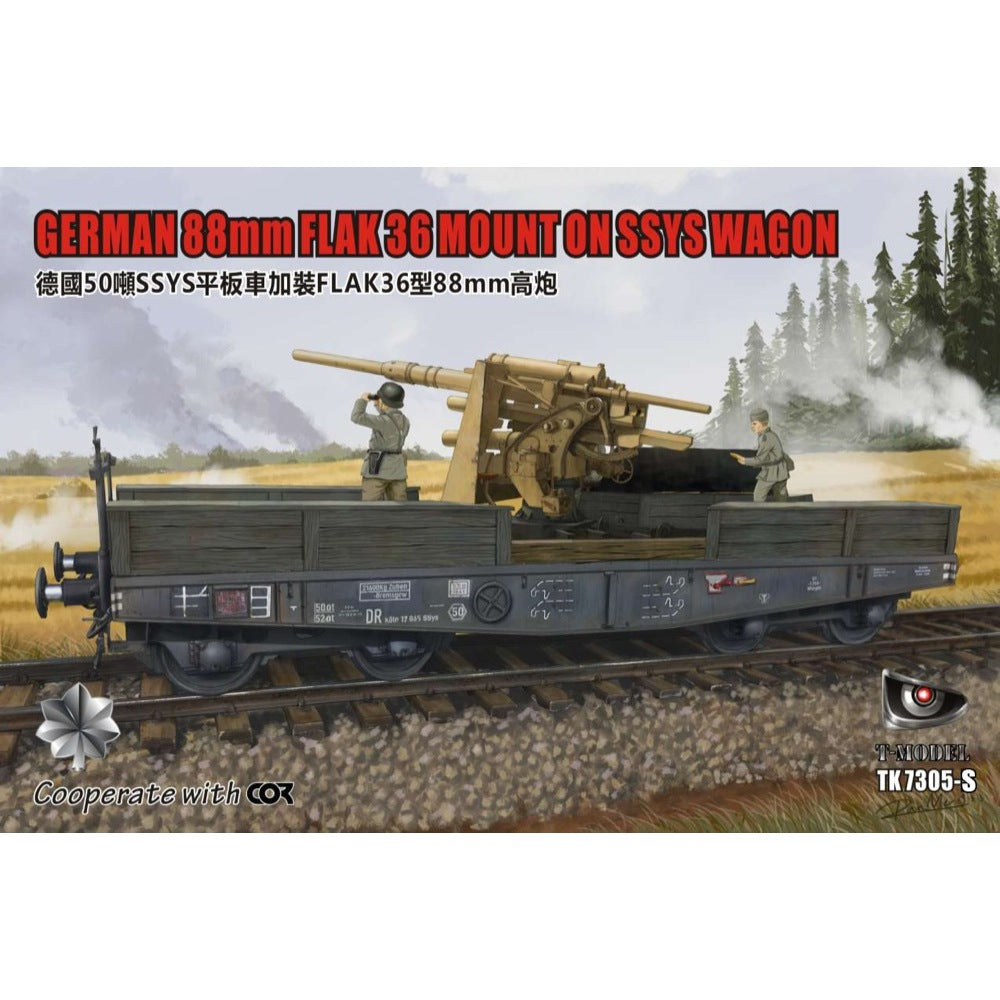
T-Model TK7305S 1/72 German 88mm Flak 36 Mounted On SSYS Wagon with wooden deck and photo etch
21.00
$
<h3>T-Model 1/35 German 88mm Flak 36 Mounted On SSYS Wagon</h3>


